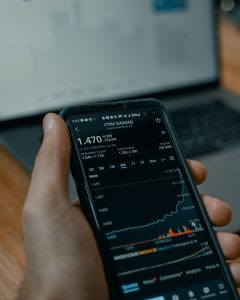How to Develop a Winning Trading Strategy in Forex
Forex trading can be an incredibly rewarding endeavor if you approach it with the right mindset and a well-developed trading strategy. A trading strategy is a set of rules and guidelines that traders use to make informed decisions about entering and exiting trades. Developing a winning trading strategy is crucial to long-term success in the forex market. In this article, we will explore the key steps to developing a winning trading strategy in forex.
1. Understand Your Trading Style
The first step in developing a winning trading strategy is to understand your trading style. There are several different trading styles, such as scalping, day trading, swing trading, and position trading. Each style has its own advantages and disadvantages, and it is important to choose a style that suits your personality and lifestyle. For example, if you prefer shorter-term trades and enjoy being active in the market, day trading or scalping may be the right fit for you. On the other hand, if you prefer longer-term trades and have a more patient approach, swing trading or position trading may be more suitable.
2. Define Your Goals and Risk Tolerance
Before developing a trading strategy, it is important to define your goals and risk tolerance. Your goals will determine the timeframe and potential profit targets you aim for, while your risk tolerance will determine the amount of capital you are willing to risk on each trade. It is crucial to be realistic about your goals and risk tolerance to avoid excessive losses and emotional decision-making. A common rule of thumb is to risk no more than 2% of your trading capital on any single trade.
3. Analyze the Market
Once you have defined your trading style, goals, and risk tolerance, it is time to analyze the market. Forex traders use two main types of analysis: technical analysis and fundamental analysis. Technical analysis involves studying price charts and using indicators to identify patterns and trends in the market. Fundamental analysis, on the other hand, focuses on economic and political factors that can impact currency values. Both types of analysis are important and can be used together to make informed trading decisions.
4. Develop a Trading Plan
Based on your analysis of the market, it is time to develop a trading plan. A trading plan is a written document that outlines your trading strategy, including entry and exit criteria, risk management rules, and money management guidelines. It is essential to have a trading plan in place to avoid impulsive and emotional trading decisions. Your trading plan should be clear, concise, and easy to follow. It should also be flexible enough to adapt to changing market conditions.
5. Backtest and Demo Trade
Before implementing your trading strategy in a live trading account, it is important to backtest and demo trade your strategy. Backtesting involves applying your trading strategy to historical price data to see how it would have performed in the past. This helps you identify any flaws or weaknesses in your strategy. Demo trading, on the other hand, involves trading with virtual money in a simulated trading environment. This allows you to test your strategy in real-time market conditions without risking any real capital.
6. Monitor and Refine Your Strategy
Once you have started trading with real money, it is important to monitor and refine your trading strategy. Keep a trading journal to track your trades and analyze your performance. This will help you identify any areas of improvement and make necessary adjustments to your strategy. It is also crucial to stay updated on market news and events that can impact currency prices. Markets are constantly evolving, and a successful trader is one who can adapt to changing conditions.
In conclusion, developing a winning trading strategy in forex requires a systematic approach and a deep understanding of the market. By defining your trading style, goals, and risk tolerance, analyzing the market, developing a trading plan, backtesting and demo trading, and continuously monitoring and refining your strategy, you can increase your chances of success in the forex market. Remember that forex trading involves risks, and it is important to manage your risks effectively by implementing proper risk management techniques. With time, practice, and discipline, you can develop a winning trading strategy that suits your individual needs and preferences.






